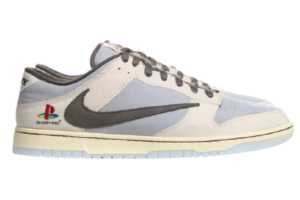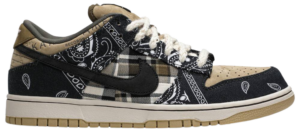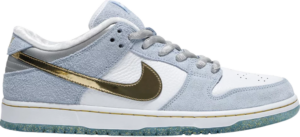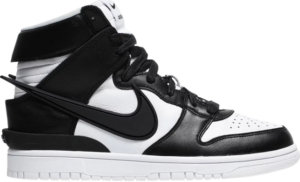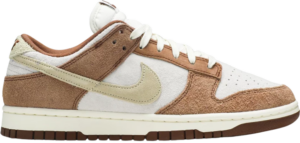In an era where women are breaking barriers in every field, why should the athletic shoe industry be any different? Welcome to the revolution in women’s footwear – the rise of Women’s Athletic Shoes.
This isn’t just about pink colorways or smaller sizes. It’s about innovative design and functionality tailored to the unique biomechanics of the female foot. As more women lace up for sports, fitness, and outdoor adventures, the demand for shoes that truly fit their needs is skyrocketing.
This article delves into the exciting world of women’s athletic shoes, exploring how they’re changing the game, one step at a time. So, whether you’re a female athlete, a fitness enthusiast, or simply someone interested in the evolving world of sports gear, read on to discover how these shoes are redefining performance and style.
Understanding the Need for Women’s Athletic Shoes
Over the years, the sports industry has seen a significant shift towards the development of Women’s Athletic Shoes. This evolution is not merely about aesthetics or marketing strategies; it’s about addressing the unique physiological needs of women athletes. Women’s feet are not just smaller versions of men’s; they have a different shape, structure, and biomechanics. Women-specific athletic shoes are necessary to provide optimal support, comfort, and performance enhancement tailored to women’s needs.
Several factors contribute to the need for Women’s Athletic Shoes. Firstly, women’s feet tend to have a narrower heel and a wider forefoot compared to men’s. This requires a different shoe shape to ensure a snug fit and prevent injuries.
Secondly, women’s lower body biomechanics, including the wider Q-angle (the angle between the hip and knee), can lead to different movement patterns and stresses on the feet. This necessitates shoes with specific support and cushioning features. Lastly, hormonal changes during the menstrual cycle can affect women’s ligament laxity and foot structure, further emphasizing the need for shoes designed with women’s unique needs in mind.
Dunk Low x Travis Scott x Playstation
$239.99 Select options This product has multiple variants. The options may be chosen on the product pageNike Air Force 1 Low x OW ‘The Ten’ White
$239.99 Select options This product has multiple variants. The options may be chosen on the product pageDunk Low Premium QS SB x Travis Scott ‘Cactus Jack’
$249.99 Select options This product has multiple variants. The options may be chosen on the product pageNike Air Force 1 Low x OW ‘MCA’ University Blue
$229.99 Select options This product has multiple variants. The options may be chosen on the product pageDunk Low SB x Sean Cliver ‘Holiday Special’
$239.99 Select options This product has multiple variants. The options may be chosen on the product pageDunk High x Ambush ‘Black’
$239.99 Select options This product has multiple variants. The options may be chosen on the product page
The Evolution of Women’s Athletic Footwear: A Historical Perspective
Women’s athletic footwear has come a long way since the early days when women were expected to participate in sports wearing the same shoes as men. This one-size-fits-all approach did not consider the unique biomechanics of women’s feet, leading to discomfort and potential injuries.
The evolution of women’s athletic footwear began in earnest in the late 20th century, when brands started recognizing the need for gender-specific designs. This shift was driven by a growing understanding of the anatomical differences between male and female feet, such as width, arch shape, and pronation patterns.
Initially, the design of women’s athletic shoes was more about aesthetics than functionality. However, as more women started participating in sports and demanding better performance from their footwear, manufacturers began to invest in research and development to create shoes that catered to women’s specific needs. This led to the introduction of features like wider toe boxes, higher arch support, and lighter materials.
The rise of Women’s Athletic Shoes has not only broken barriers in design and functionality but also empowered women athletes to perform at their best. Today, the market is flooded with a wide range of women’s athletic shoes, each designed for a specific sport or activity, from running and tennis to weightlifting and yoga.
Innovative Design Elements in Women’s Sports Shoes
As the demand for Women’s Athletic Shoes skyrockets, brands are stepping up their game with innovative design elements that cater to the unique needs of female athletes. These designs are not just about aesthetics, but also about enhancing performance, comfort, and durability. The rise of women’s sports shoes is breaking barriers in design and functionality, offering a range of options that are as diverse as the women who wear them.
One of the key design elements in women’s sports shoes is the use of lightweight materials. These materials reduce the overall weight of the shoe, making it easier for women to move and perform at their best.
Another innovative design element is the incorporation of gender-specific cushioning. Women’s sports shoes often feature softer cushioning to accommodate the generally lighter weight and different biomechanics of female athletes.
Furthermore, brands are also focusing on improving shoe fit by considering the typically narrower heel and wider forefoot of women. This ensures a snug fit, reducing the risk of injuries and enhancing performance.
- Advanced breathability features are also being incorporated into women’s sports shoes. This helps keep the feet dry and comfortable, even during intense workouts or long runs.
- Another innovative design element is the use of flexible soles. These soles adapt to the natural movement of the foot, providing superior comfort and reducing the risk of injuries.
- Finally, brands are also focusing on durability. Women’s sports shoes are designed to withstand the rigors of various sports, ensuring they last longer and provide consistent performance.
These innovative design elements are revolutionizing the world of women’s sports shoes, making them more than just a fashion statement. They are a testament to the rise of women-specific athletic shoes, breaking barriers in design and functionality, and empowering female athletes like never before.
How Women’s Athletic Shoes Enhance Performance
Special shoes for women in sports are changing the game, with a great mix of style and practicality that boosts performance. These shoes are carefully made for women’s feet, which are usually narrower with a higher arch than men’s feet.
The shoe focuses on small things. It provides the best support, stability, and comfort. It helps women athletes perform their best.
One of the key ways these shoes enhance performance is through their customized fit. A well-fitted shoe reduces the risk of injuries, prevents blisters, and provides better control during movement.
Another crucial factor is the lightweight design of Women’s Athletic Shoes. This reduces the strain on the feet and legs, allowing for longer periods of activity without fatigue.
Furthermore, these shoes often feature advanced cushioning technology to absorb shock, reducing the impact on joints and improving overall comfort. These shoes are flexible and allow for natural foot movement. This is important for activities that require agility and quick changes in direction.
- Customized fit: A well-fitted shoe reduces the risk of injuries, prevents blisters, and provides better control during movement.
- Lightweight design: This reduces the strain on the feet and legs, allowing for longer periods of activity without fatigue.
- Advanced cushioning technology: To absorb shock, reducing the impact on joints and improving overall comfort.
- Flexibility: Allows for a natural foot movement, which is essential for activities that require agility and quick directional changes.
Women’s athletic shoes with unique design and improved functionality are empowering female athletes to achieve higher performance levels. They are a testament to the rise of women in sports, reflecting the increasing recognition of their unique needs and potential.
The Role of Women’s Athletic Shoes in Injury Prevention
As the world of sports continues to evolve, so does the understanding of the unique needs of female athletes. One such need is the importance of Women’s Athletic Shoes in injury prevention.
Traditionally, women’s sports shoes were simply smaller versions of men’s shoes. However, research has shown that women’s feet are not just smaller, but structurally different from men’s. This has led to the development of athletic shoes designed specifically for women, taking into account factors like foot shape, arch height, and biomechanics.
Dunk Low x Travis Scott x Playstation
$239.99 Select options This product has multiple variants. The options may be chosen on the product pageDunk Low Premium QS SB x Travis Scott ‘Cactus Jack’
$249.99 Select options This product has multiple variants. The options may be chosen on the product pageDunk Low SB x Sean Cliver ‘Holiday Special’
$239.99 Select options This product has multiple variants. The options may be chosen on the product pageDunk High x Ambush ‘Black’
$239.99 Select options This product has multiple variants. The options may be chosen on the product pageDunk Low Pro SB x Jason Deng ‘Street Hawker’
$229.99 Select options This product has multiple variants. The options may be chosen on the product pageDunk Low Premium ‘Medium Curry’
$229.99 Select options This product has multiple variants. The options may be chosen on the product page
These gender-specific design features play a crucial role in injury prevention. For instance, women’s athletic shoes often have a wider forefoot and narrower heel to accommodate the typical female foot shape. This can help prevent conditions like bunions, hammertoes, and plantar fasciitis.
Additionally, women’s shoes often have more arch support to compensate for the higher incidence of flat feet among women. This can help prevent injuries like shin splints and stress fractures.
Furthermore, the biomechanics of women’s gait, particularly the wider hip angle, are considered in the design of these shoes. This can help reduce the risk of knee and hip injuries. Women’s athletic shoes are being improved in terms of design and functionality. This is not the only reason for the increase in their availability. Another important factor is the promotion of health and safety for female athletes.
Breaking Gender Stereotypes: The Impact of Women’s Athletic Shoes
The advent of Women’s Athletic Shoes has played a significant role in breaking gender stereotypes in the sports industry. Traditionally, the athletic shoe market was dominated by male-centric designs and functionality, often overlooking the unique needs of female athletes. The increase in women’s sports shoes challenges the norm, highlighting the importance of gender-specific design and functionality in athletic footwear.
These shoes are not just about aesthetics; they’re about empowering women athletes by addressing their specific needs. For instance, women’s feet tend to have a narrower heel and higher arch compared to men’s. Women’s Athletic Shoes cater to these differences, providing better fit, comfort, and performance.
This shift in design philosophy has not only improved women’s performance in sports but also boosted their confidence and participation levels. Moreover, it has encouraged more women to take up sports, fostering gender equality in the field. The rise of women’s athletic shoes is thus a testament to the industry’s commitment to breaking gender stereotypes and promoting inclusivity.
Future Trends in Women’s Athletic Footwear Design and Functionality
The market for women’s athletic shoes is growing, with more innovative and gender-specific designs becoming popular. The future of women’s athletic footwear is all about personalization, sustainability, and technology. Brands are increasingly focusing on creating shoes that cater to the unique needs of women, offering a perfect blend of style, comfort, and performance.
Expect to see more shoes with features like wider toe boxes, flexible soles, and improved arch support. Also, with the rising trend of eco-consciousness, more brands are moving towards sustainable materials and production processes.
Technology is another key player in the future of women’s athletic footwear. We’re seeing the integration of smart technology in shoes, offering features like fitness tracking and personalized coaching. Brands are also leveraging 3D printing technology to create custom-fit shoes, ensuring maximum comfort and performance. Furthermore, virtual reality and augmented reality are being used for virtual try-ons, making online shopping more convenient and accurate.
The future of women’s athletic footwear is not just about functionality, but also about creating an enhanced user experience. So, whether you’re a professional athlete or a fitness enthusiast, the future holds exciting possibilities for you.
Q&A
Q: What is the significance of the rise of Women’s Athletic Shoes?
A: The rise of Women’s Athletic Shoes is a significant development in the sports industry. The focus has changed to making products for women’s needs. This marks a departure from the previous strategy of making things smaller and pink. This trend is about more than just aesthetics; it’s about functionality, comfort, and performance.
Q: How are Women’s Athletic Shoes breaking barriers in design?
A: Women’s Athletic Shoes are breaking barriers by moving away from the traditional unisex designs. Brands are now acknowledging the physiological differences between men and women, such as foot shape, weight distribution, and biomechanics. Shoes now have narrower heels, wider forefoot areas, and more flexible soles to better fit women’s unique needs.
Q: What are some examples of functionality improvements in women’s Athletic Shoes?
A: The improvements make the shoes more comfortable, stable, and provide better grip on different surfaces. Some brands are using lighter materials to make shoes lighter, making it easier for women to move and perform.
Q: Why is it important for women to wear women’s Athletic Shoes?
A: Wearing women’s Athletic Shoes can significantly improve performance and reduce the risk of injuries. Special shoes for women consider the unique features of their feet and how they move, giving better support, comfort, and fit. This can lead to improved balance, stability, and overall performance in various sports and physical activities.
Q: Are women’s Athletic Shoes more expensive than unisex or men’s shoes?
A: Not necessarily. The price of athletic shoes generally depends on the brand, the technology used, and the specific model, not the gender specificity. Women’s Athletic Shoes can range from affordable to high-end, just like men’s or unisex shoes.
Q: How has the market responded to the rise of women’s Athletic Shoes?
A: The market response has been overwhelmingly positive. Many women appreciate the increased attention to their specific needs and the improved performance these shoes offer. More women’s athletic shoes means more competition between brands, resulting in more innovation and options for consumers.
Q: What does the future hold for women’s athletic shoes?
A: The future looks promising. As more research is done on women’s sports needs, we’ll see more progress in design and functionality. Women’s athletic shoes are not just a trend, but a big step towards equality and inclusivity in sports.
Conclusion
Women’s athletic shoes are not just a trend, but a sign of progress in design and functionality in the sports industry. It’s a stride towards breaking barriers, acknowledging the unique needs of women athletes, and celebrating their strength. From improved performance to enhanced comfort, these shoes are revolutionizing the way women engage in sports and fitness activities.
But the journey doesn’t stop here. What other advancements can we expect in women’s sports shoes as we keep pushing the limits of innovation? How will these advancements further empower women in sports? The future holds exciting possibilities, and we’re here to keep you updated on every step of the way.
So, whether you’re a professional athlete, a fitness enthusiast, or someone who simply values comfort and style, stay tuned for more insights on women’s athletic shoes. Let’s continue to explore, learn, and celebrate the power of women in sports. Because when it comes to breaking barriers in design and functionality, the best is yet to come.
Remember, every step you take in the right shoes, is a step towards achieving your athletic goals. So, lace up and get ready to conquer the world with the rise of women’s athletic shoes.
Explore more about women’s sports footwear, stay informed, and stay ahead. Because you’re not just wearing a pair of shoes, you’re wearing a revolution.
